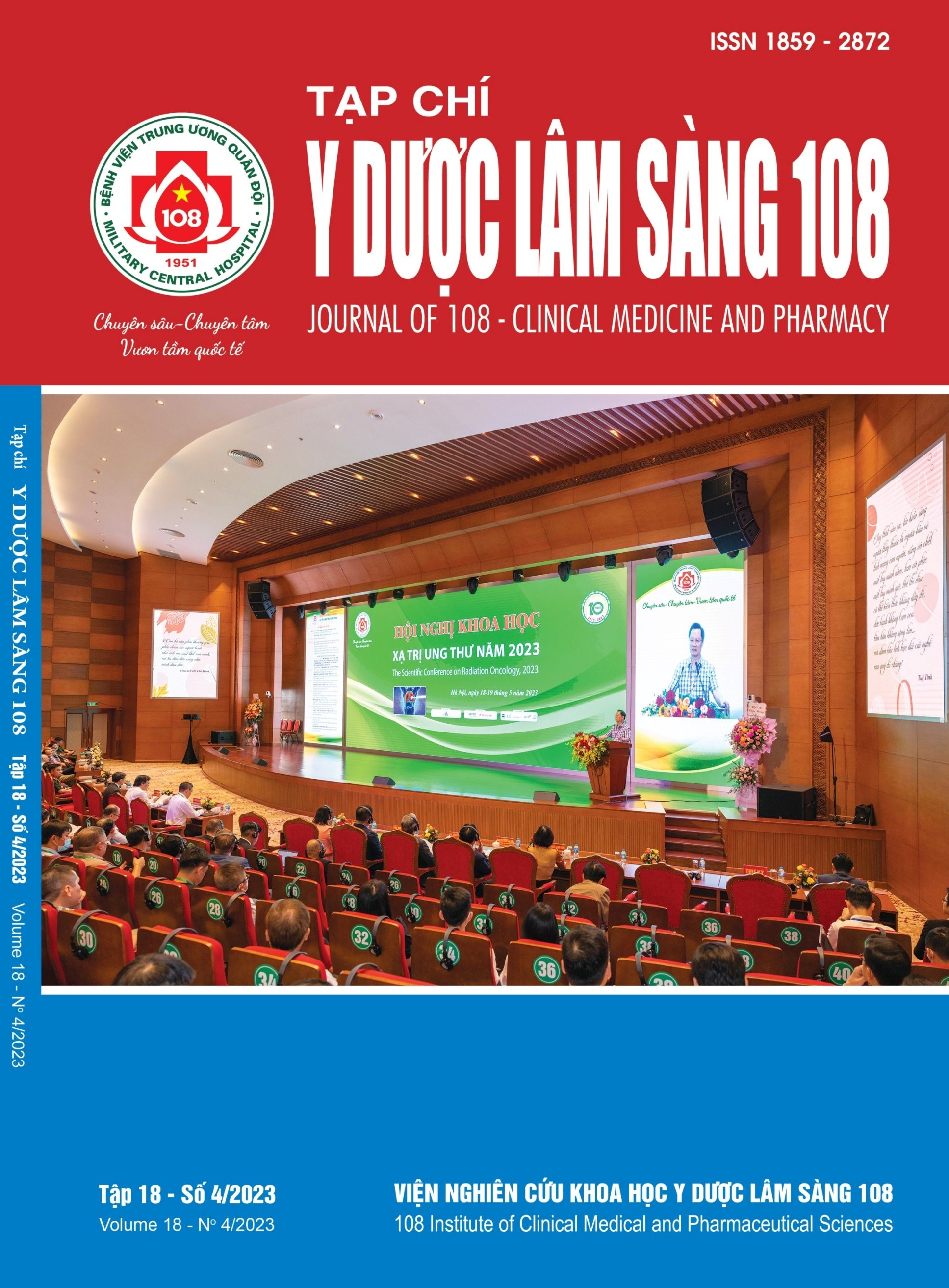Vai trò của vitamin D và sắt huyết tương trong tiên lượng tử vong ở bệnh nhân nhiễm khuẩn huyết
Main Article Content
Keywords
Tóm tắt
Mục tiêu: Xác định giá trị tiên lượng tử vong trong 30 ngày của nồng độ vitamin D và sắt huyết tương ở bệnh nhân nhiễm khuẩn huyết. Đối tượng và phương pháp: Nghiên cứu mô tả tiến cứu trên 125 bệnh nhân nhiễm khuẩn huyết điều trị tại Bệnh viện Trung ương Quân đội 108 từ tháng 11/2019 đến tháng 02/2021. Nồng độ vitamin D và sắt huyết tương được đo tại thời điểm chẩn đoán nhiễm khuẩn huyết, theo dõi sống sót và tử vong trong 30 ngày. Kết quả: Nồng độ vitamin D và sắt huyết tương tại thời điểm chẩn đoán nhiễm khuẩn huyết tương ứng là 20,41 (15,03-30,25) ng/mL và 1,9 (1,0-4,0) µmol/L. Nồng độ vitamin D huyết tương ở nhóm tử vong trong 30 ngày thấp hơn nhóm sống sót, p=0,004. Bệnh nhân có nồng độ vitamin D huyết tương < 15,74ng/mL có nguy cơ tử vong trong 30 ngày cao hơn bệnh nhân có nồng độ vitamin D huyết tương ≥ 15,74ng/mL, OR là 4,26 (1,84-9,90), p<0,001. Nồng độ sắt huyết tương ở nhóm tử vong trong 30 ngày cao hơn nhóm sống sót, p=0,016. Bệnh nhân có nồng độ sắt huyết tương ≥ 1,75µmol/L có nguy cơ tử vong cao hơn bệnh nhân có nồng độ sắt huyết tương < 1,75µmol/L, OR là 3,63 (1,49-8,86), p=0,003. Kết luận: Nồng độ vitamin D < 15,74ng/mL và sắt huyết tương ≥ 1,75µmol/L có thể là những yếu tố nguy cơ tử vong trong 30 ngày ở bệnh nhân nhiễm khuẩn huyết.
Article Details
Các tài liệu tham khảo
2. Rossetti M, Martucci G, Starchl C et al (2021) Micronutrients in Sepsis and COVID-19: A Narrative Review on What We Have Learned and What We Want to Know in Future Trials. Medicina (Kaunas) 57(5): 419.
3. Ganz T, Nemeth E (2015) Iron homeostasis in host defence and inflammation. Nat Rev Immunol 15(8): 500-510.
4. Ayoglu H, Sezer U, Akin M et al (2016) Selenium, copper, zinc, iron levels and mortality in patients with sepsis and systemic inflammatory response syndrome in Western Black Sea Region, Turkey. J Pak Med Assoc 66(4): 447-452.
5. Lan P, Pan KH, Wang SJ et al (2018) High Serum Iron level is Associated with Increased Mortality in Patients with Sepsis. Scientific reports 8(1): 11072-11072.
6. Jiang Y, Jiang FQ, Kong F et al (2019) Inflammatory anemia-associated parameters are related to 28-day mortality in patients with sepsis admitted to the ICU: A preliminary observational study. Ann Intensive Care 9(1): 67.
7. Singer M, Deutschman CS, Seymour C et al (2016) The third international consensus definitions for sepsis and septic shock (sepsis-3). Jama 315(8): 801-810.
8. Brandtner A, Tymoszuk P, Nairz M et al (2020) Linkage of alterations in systemic iron homeostasis to patients' outcome in sepsis: A prospective study. J Intensive Care 8: 76.
9. Bayat M, Gachkar L, Zahirnia M et al (2021) Association between low serum vitamin d levels and sepsis: A single-center study in Tehran, Iran. 16(1): 102926.
10. Shojaei M, Sabzeghabaei A, Valaei Barhagh H et al (2019) The Correlation between Serum Level of Vitamin D and Outcome of Sepsis Patients; A Cross-Sectional Study. Arch Acad Emerg Med 7(1): 1.
11. Rech MA, Hunsaker T, Rodriguez J (2014) Deficiency in 25-hydroxyvitamin D and 30-day mortality in patients with severe sepsis and septic shock. Am J Crit Care 23(5): 72-79.
12. Li Y, Ding S (2020) Serum 25-Hydroxyvitamin D and the risk of mortality in adult patients with Sepsis: a meta-analysis. BMC Infect Dis 20(1): 189.
13. Trongtrakul K, Feemuchang C (2017) Prevalence and association of vitamin D deficiency and mortality in patients with severe sepsis. Int J Gen Med 10: 415-421.
14. Chen Z, Luo Z, Zhao X et al (2015) Association of vitamin D status of septic patients in intensive care units with altered procalcitonin levels and mortality. J Clin Endocrinol Metab 100(2): 516-523.
 ISSN: 1859 - 2872
ISSN: 1859 - 2872
